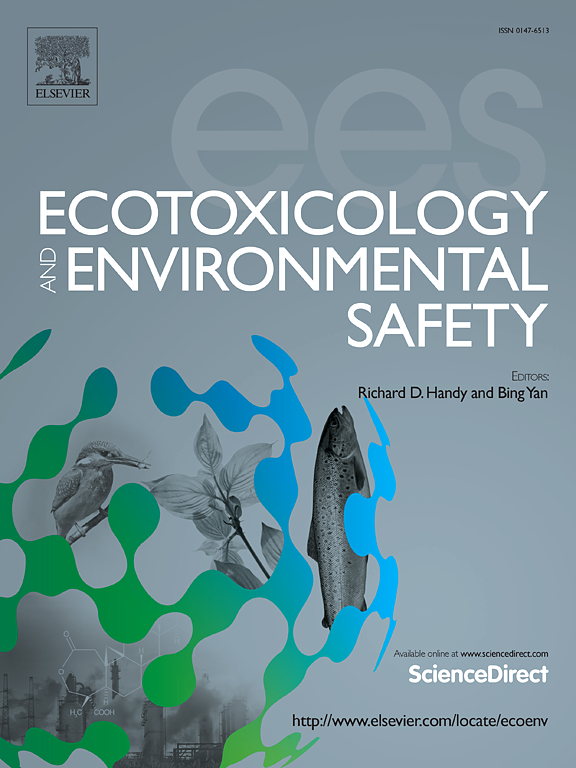Toxicity mechanism of microplastics on the growth traits and metabolic pathways of Vallisneria natans under different light environments
IF 6.2
2区 环境科学与生态学
Q1 ENVIRONMENTAL SCIENCES
引用次数: 0
Abstract
Freshwater plants are threatened by microplastics (MPs). While many studies have reported the effects of MPs on aquatic plants and animals, few have examined the effects of MPs on plant metabolism at different light intensities. We explore cellular, metabolic, and stress responses of Vallisneria natans at different light intensities (0, 20, 90, 160, 280 μmol·m−2·s−1), without and with (50 mg·L−1) MPs. The experiment showed that that the strong light promotes adsorption and accumulation of MPs on leaf and root tissues, affected growth rate, and changed metabolic pathways, inhibited photosynthetic processes, and enhanced oxidative stress responses in V. natans. Metabolomic analysis and experimental validation revealed that the combination of 280 μmol m−2·s−1 and MPs interfered most severely with plant carbon and nitrogen metabolism, lipid metabolism, and amino acid metabolism pathways compared with the combination of 90 μmol m−2·s−1 and MPs. This condition also significantly inhibited the activities of photosynthesis and energy transfer-related regulators and proteins, as well as stimulated oxidative stress-related pathways and exacerbated oxidative stress toxicity responses. The results of the research indicate that the highest light intensity tested can increase the accumulation of MPs, leading to V. natans cell damage, inhibition of photosynthetic metabolism, and the risk of oxidative toxic stress. Our results provide a basis for the analysis of the growth and metabolism processes and risk assessment of aquatic plants under the action of light and MPs.
求助全文
约1分钟内获得全文
求助全文
来源期刊
CiteScore
12.10
自引率
5.90%
发文量
1234
审稿时长
88 days
期刊介绍:
Ecotoxicology and Environmental Safety is a multi-disciplinary journal that focuses on understanding the exposure and effects of environmental contamination on organisms including human health. The scope of the journal covers three main themes. The topics within these themes, indicated below, include (but are not limited to) the following: Ecotoxicology、Environmental Chemistry、Environmental Safety etc.

 求助内容:
求助内容: 应助结果提醒方式:
应助结果提醒方式:


